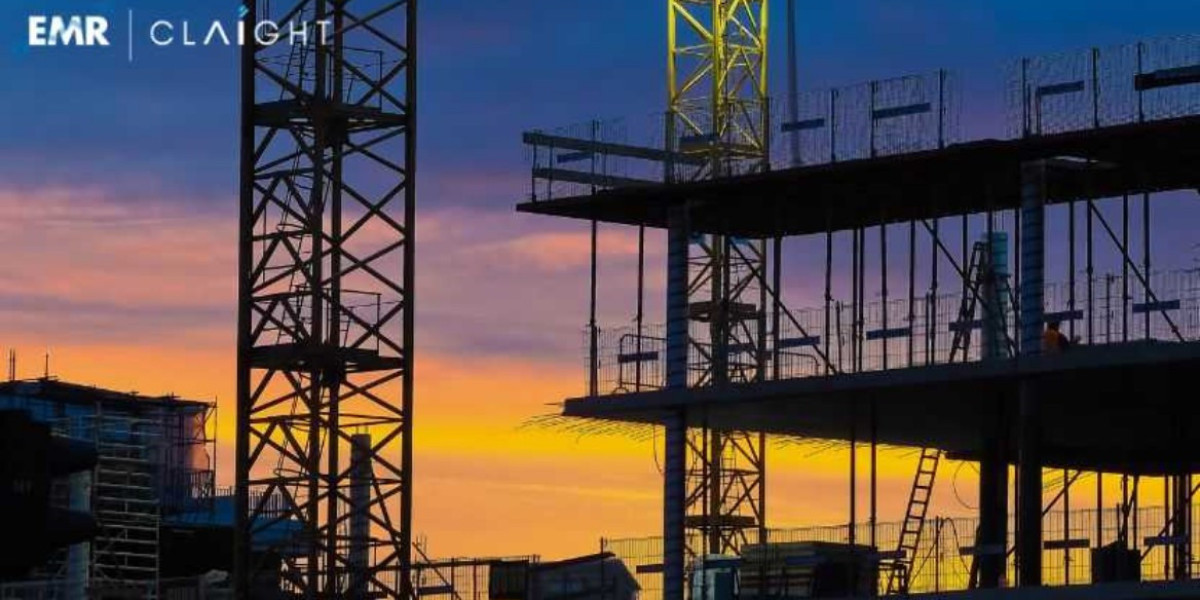The Europe construction market share is set for steady growth, driven by urbanization, infrastructure modernization, and sustainability initiatives. In 2024, the market was valued at USD 2,752.75 billion, and it is projected to grow at a CAGR of 4.9% from 2025 to 2034, reaching approximately USD 4,233.96 billion by the end of the forecast period.
With governments investing in smart cities, renewable energy projects, and transportation infrastructure, the demand for advanced construction technologies and sustainable materials is rising. Additionally, digitalization and automation in construction processes are improving efficiency and reducing costs.
This blog explores the market dynamics, key drivers, challenges, emerging trends, and segmentation to provide a comprehensive outlook on the future of the Europe construction market.
Key Market Drivers: What’s Fueling Growth in the Construction Industry?
1. Increasing Infrastructure Investments
Governments across Europe are prioritizing large-scale infrastructure projects, including smart cities, rail networks, highways, and public transportation systems. The European Union’s Green Deal and Recovery Plan are supporting investments in energy-efficient buildings and resilient infrastructure.
2. Urbanization and Population Growth
Rising urban populations are increasing demand for residential complexes, commercial spaces, and public facilities. European cities are expanding their infrastructure to accommodate growing populations while focusing on sustainable urban planning.
3. Sustainability and Green Building Initiatives
The construction industry is shifting towards energy-efficient buildings, sustainable materials, and carbon-neutral projects. Regulations such as the EU’s Energy Performance of Buildings Directive (EPBD) are pushing developers to adopt green building practices.
4. Digital Transformation and Smart Construction Technologies
The adoption of Building Information Modeling (BIM), Artificial Intelligence (AI), and Internet of Things (IoT) in construction is improving project management, efficiency, and cost control. Smart construction technologies are reducing delays and improving sustainability.
5. Growth of Prefabrication and Modular Construction
Prefabrication and modular construction techniques are revolutionizing the industry by reducing construction time, minimizing waste, and improving cost efficiency. These methods are particularly popular in residential, commercial, and healthcare construction.
Market Segmentation: Key Areas of Growth
By Type of Construction
Residential Construction
- Demand for energy-efficient homes and smart apartments is increasing.
- Governments are offering subsidies for green housing projects.
Commercial Construction
- Expansion of office spaces, retail centers, and mixed-use buildings.
- Growth in hospitality and tourism infrastructure.
Industrial Construction
- Increase in warehouses, logistics centers, and manufacturing plants.
- Adoption of automation and smart factory designs.
Infrastructure Development
- Investments in transportation networks, bridges, tunnels, and smart highways.
- EU’s focus on renewable energy infrastructure and public transport expansion.
By Material Type
- Concrete – Most widely used in commercial and infrastructure projects.
- Steel – Preferred for high-rise buildings and industrial facilities.
- Wood & Sustainable Materials – Growing demand for eco-friendly and energy-efficient structures.
- Composites & Advanced Materials – Used in lightweight and high-strength construction.
By Technology Integration
- BIM (Building Information Modeling) – Enhancing design accuracy and project management.
- 3D Printing – Accelerating modular housing and low-cost building production.
- Drones & Robotics – Improving site inspections, safety, and automation.
- IoT & AI – Enabling smart energy management and predictive maintenance.
By End-User
- Government & Public Sector – Investments in transportation, energy, and social housing.
- Private Sector & Real Estate Developers – Focus on luxury apartments, retail, and corporate buildings.
- Industrial & Logistics Companies – Expanding manufacturing hubs and supply chain facilities.
Emerging Trends in the Europe Construction Market
1. Smart Cities and IoT-Driven Infrastructure
European cities are integrating smart lighting, intelligent traffic management, and IoT-based monitoring systems into urban infrastructure. Countries like Germany, France, and the UK are leading investments in smart city projects.
2. Rise of Carbon-Neutral and Net-Zero Buildings
The EU’s 2030 climate targets are pushing construction companies to develop net-zero buildings using renewable energy, green insulation, and efficient HVAC systems.
3. Growth of Offsite and Prefabricated Construction
Prefabrication reduces construction time, cost, and material wastage, making it ideal for residential and commercial projects. Countries like Sweden and the Netherlands are leading in modular construction.
4. Circular Economy and Waste Reduction
The construction sector is embracing recycled materials, energy-efficient designs, and waste reduction strategies to minimize environmental impact. Reusing concrete, steel, and wood materials is becoming a standard practice.
5. Digital Twin Technology in Construction
Digital twins create virtual replicas of buildings and infrastructure, allowing construction teams to optimize design, maintenance, and performance. This technology is improving project efficiency and risk management.
Challenges Facing the Europe Construction Market
1. Rising Construction Costs and Supply Chain Disruptions
The cost of raw materials, transportation, and labor shortages is affecting construction timelines and budgets. Supply chain disruptions caused by geopolitical tensions and global economic fluctuations are adding pressure.
2. Skilled Labor Shortages
The industry faces a shortage of trained professionals, engineers, and construction workers, leading to project delays. Countries are focusing on workforce training and digital skill development to address this issue.
3. Stringent Regulatory and Environmental Standards
Construction companies must comply with EU environmental policies, carbon reduction targets, and energy efficiency regulations. Meeting these requirements increases project complexity and costs.
4. Digital Transformation Adoption Barriers
While digital technologies are transforming construction, small and mid-sized companies struggle with adoption due to high investment costs and lack of technical expertise.
5. Urban Land Scarcity and Rising Property Prices
Limited land availability in major cities like London, Paris, and Berlin is driving higher real estate prices, making affordable housing development challenging.
Future Growth Opportunities in the Europe Construction Market
1. Expansion of Renewable Energy Infrastructure
Countries are investing in solar farms, wind energy projects, and hydroelectric plants, creating opportunities for green construction and energy-efficient buildings.
2. 3D Printing and AI-Driven Construction
Advanced 3D printing technologies will enable cost-effective, sustainable, and fast construction of residential and commercial buildings. AI-driven analytics will improve project planning and risk mitigation.
3. Growth in Affordable and Social Housing
Governments are funding affordable housing projects to meet the growing demand for low-income and middle-class housing. Sustainable building practices will play a crucial role in these developments.
4. Smart Transportation and Mobility Infrastructure
With rising urban populations, investments in high-speed rail, metro systems, and smart highways are set to increase, enhancing connectivity across European regions.







